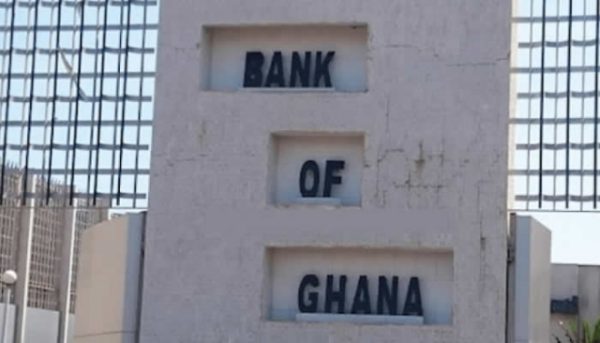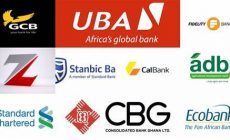This is against the 14.0 percent growth recorded for the same period last year.
According to the report, the higher growth in net profit was underpinned by an increase in the growth of net interest income coupled with a slowdown in the growth of operating expenses and total provisions. Importantly, net interest income grew by 17.9 percent on account of higher interest income from investments and lower borrowing cost from reduced borrowings resulting from the strong deposits mobilization.
Fees and commissions however inched up by only 0.4 percent compared to the 16.8 percent growth witnessed during same period last year. This was largely due to the slowdown in the volume of off- balance sheet activities which dipped during the first two months as noted earlier.
Growth in operation was somehow contained at 7.7 percent, lower than the previous year’s growth of 8.6 percent, due largely to efficiency gains from bank consolidations and the rationalization of bank branches. This also contributed to lower growth in provisions for fixed assets.
Total provisions (on loans and fixed assets depreciation) grew by only 2.2 percent, significantly lower than the 11.9 percent recorded for the same period a year earlier on account of reduction in fixed assets and lower NPLs.
The improved profitability levels during the period under review positively reflected in the main indicators, namely, after-tax Return on Equity (ROE) and before-tax Return on Assets (ROA). The industry’s ROE increased to 20.1 percent in February 2019 from 19.0 percent in February 2018. Similarly, the ROA measured increased to 4.2 percent from 4.0 percent during the same comparative period, pointing to improved profitability within the banking industry.
Banks’ Income Composition
The share of investments income in banks’ income rose with its share in total assets.
The report noted that investments (both short and long-term) constituted the largest source of income for banks, with its share increasing to 44.7 percent in February 2019 from 41.5 percent in February 2018.
The share of income from loans declined to 35.9 percent from 38.7 percent during the period under review, following the decline in the size of loans in the industry’s assets.
Also, the share of banks’ income from commissions and fees also declined to 11.9 percent in February 2019 from 12.6 percent a year earlier, while other income sources from non-core banking activities inched up to 7.5 percent of their total income from 7.2 percent over the same period in 2018.
Financial Soundness Indicators
(a) Liquidity Indicator
According to the report, the banking sector remains liquid with only some marginal declines in core liquidity measures during the review period.
The ratio of core liquid assets (cash and due from banks and short term bills) to total deposits declined to 35.6 percent in February 2019 from 39.6 percent in February 2018. The decline in this ratio can be explained by the fact that total deposits increased while at the same time, banks’ investments in short term bills contracted as they shifted their investment mix towards long term securities.
(b) Capital Adequacy Ratio
An important indicator, the banking industry’s ability to absorb losses using its capital was enhanced in February 2019.
According the report, the industry’s solvency, measured by the CAR increased to 21.7 percent in February 2019 from 19.2 percent in February 2018, reflecting the impact of the recapitalization exercise. The quality of banks’ capital also improved with the recapitalization, indicated by the sharp increase in the Tier 1 CAR to 20.6 percent from 15.9 percent during the period under review.
Asset Quality
The report explained that the industry’s asset quality improved significantly during the period under review.
The stock of the industry’s Non-Performing Loans (NPLs) declined from GH¢7.74 billion in February 2018 to GH¢6.63 billion in February 2019, representing a slower growth of 14.4 percent compared with the 21.1 percent growth recorded a year earlier. The decline in the stock of NPLs coupled with the marginal pick-up in credit growth translated into a lower NPL ratio of 18.2 percent in February 2019 from 21.6 percent a year ago.
When adjusted for the fully-provisioned loan loss category, the NPL ratio declines to 9.4 percent from 10.9 percent, signaling a slowdown in deterioration of loan quality.
The private sector accounted for 96.9 percent of the industry’s NPLs in February 2019, up from the 92.7 percent recorded in February 2018, while the public sector’s contribution declined to 3.1 percent, from 7.3 percent over the same comparative period.
Overall, the Bank of Ghana said an assessment of the banking sector’s performance during the first two months of 2019 showed a well-capitalized, profitable, liquid and stable sector with strong prospects for increased financial intermediation.
The key financial soundness indicators it said were broadly positive during the period and are projected to improve further as banks continue to adhere to the prudential and regulatory standards of the industry.
As banks continue to enforce the write-off policy on bad loans as well as intensify credit risk management practices in line with the Capital Risk Directive issued by the Bank of Ghana, the industry’s exposure to credit risk would moderate further and safeguard stability in the sector, it added.
By Augustine Amoah








 (Selorm) |
(Selorm) |  (Nana Kwesi)
(Nana Kwesi)